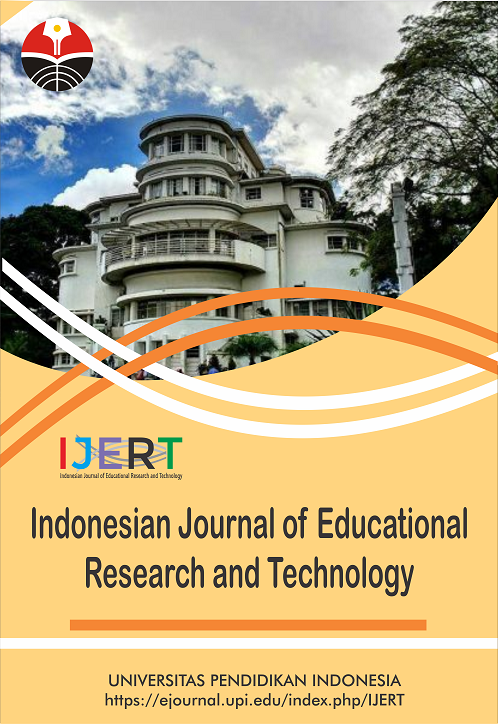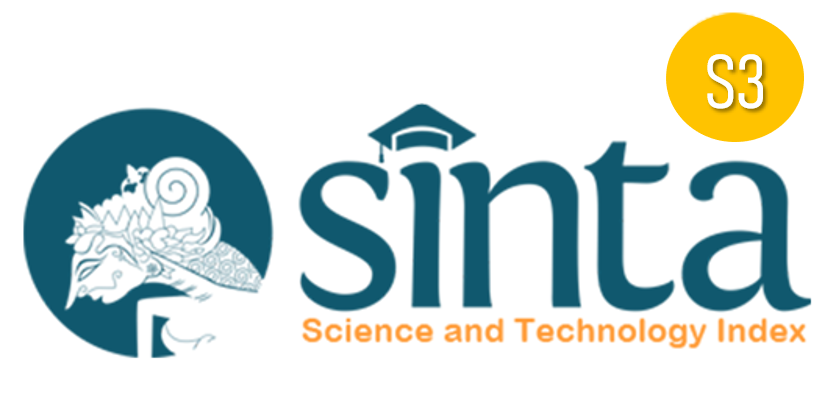Redesigning the Future of Education: A Comparative and Prospective Analysis of Online Learning and Traditional Teaching Models
Abstract
Keywords
Full Text:
PDFReferences
Aeon, B., and Aguinis, H. (2017). It’s about time: New perspectives and insights on time management. Academy of Management Perspectives, 31(4), 309-330.
Ali, W. (2020). Online and remote learning in higher education institutes: A necessity in light of COVID-19 pandemic. Higher Education Studies, 10(3), 16-25.
Amerstorfer, C. M., and Freiin von Münster-Kistner, C. (2021). Student perceptions of academic engagement and student-teacher relationships in problem-based learning. Frontiers in Psychology, 12, 713057.
Bozkurt, A., Jung, I., Xiao, J., Vladimirschi, V., Schuwer, R., Egorov, G., and Paskevicius, M. (2020). A global outlook to the interruption of education due to COVID-19 pandemic: Navigating in a time of uncertainty and crisis. Asian Journal of Distance Education, 15(1), 1-126.
Bredehöft, F., Dettmers, J., Hoppe, A., and Janneck, M. (2015). Individual work design as a job demand: The double-edged sword of autonomy. Journal Psychologie des Alltagshandelns/Psychology of Everyday Activity, 8(2), 12-24.
D'mello, S., and Graesser, A. (2013). AutoTutor and affective AutoTutor: Learning by talking with cognitively and emotionally intelligent computers that talk back. ACM Transactions on Interactive Intelligent Systems (TiiS), 2(4), 1-39.
Dumford, A. D., and Miller, A. L. (2018). Online learning in higher education: Exploring advantages and disadvantages for engagement. Journal of Computing in Higher Education, 30(3), 452-465.
Glewwe, P., and Kremer, M. (2006). Schools, teachers, and education outcomes in developing countries. Handbook of the Economics of Education, 2, 945-1017.
Irvine, V., Code, J., and Richards, L. (2013). Realigning higher education for the 21st century learner through multi-access learning. Journal of Online Learning and Teaching, 9(2), 172.
Isaeva, R., Karasartova, N., Dznunusnalieva, K., Mirzoeva, K., and Mokliuk, M. (2025). Enhancing learning effectiveness through adaptive learning platforms and emerging computer technologies in education. Jurnal Ilmiah Ilmu Terapan Universitas Jambi, 9(1), 144-160.
Jaffee, D. (1997). Asynchronous learning: Technology and pedagogical strategy in a distance learning course. Teaching Sociology, 7, 262-277.
Lapidot-Lefler, N. (2025). Teacher responsiveness in inclusive education: A participatory study of pedagogical practice, well-being, and sustainability. Sustainability, 17(7), 2919.
Moldez, J. (2024). Level of convenience to teachers, acceptability and challenges experienced by the learners on hy flex (hybrid and flexible) learning modality. Educational Research (IJMCER), 6(3), 784-820.
Mulenga, R., and Shilongo, H. (2025). Hybrid and blended learning models: innovations, challenges, and future directions in education. Acta Pedagogia Asiana, 4(1), 1-13.
Nagle, J. M. (2025). Graceful agnosticism: A pedagogy for religious life and learning today. Religious Education, 120(1), 18-30.
Pregowska, A., Masztalerz, K., Garlińska, M., and Osial, M. (2021). A worldwide journey through distance education—from the post office to virtual, augmented and mixed realities, and education during the COVID-19 pandemic. Education Sciences, 11(3), 118.
Sato, S. N., Condes Moreno, E., Rubio-Zarapuz, A., Dalamitros, A. A., Yañez-Sepulveda, R., Tornero-Aguilera, J. F., and Clemente-Suárez, V. J. (2023). Navigating the new normal: Adapting online and distance learning in the post-pandemic era. Education Sciences, 14(1), 19.
Selvaraj, A., Radhin, V., Benson, N., and Mathew, A. J. (2021). Effect of pandemic based online education on teaching and learning system. International Journal of Educational Development, 85, 102444.
Story, M., Nanney, M. S., and Schwartz, M. B. (2009). Schools and obesity prevention: creating school environments and policies to promote healthy eating and physical activity. The Milbank Quarterly, 87(1), 71-100.
Thacker, I., Seyranian, V., Madva, A., Duong, N. T., and Beardsley, P. (2022). Social connectedness in physical isolation: Online teaching practices that support under-represented undergraduate students’ feelings of belonging and engagement in STEM. Education Sciences, 12(2), 61.
Varkey, T. C., Varkey, J. A., Ding, J. B., Varkey, P. K., Zeitler, C., Nguyen, A. M., and Thomas, C. R. (2023). Asynchronous learning: a general review of best practices for the 21st century. Journal of Research in Innovative Teaching & Learning, 16(1), 4-16.
Woo, K., Gosper, M., McNeill, M., Preston, G., Green, D., and Phillips, R. (2008). Web-based lecture technologies: Blurring the boundaries between face-to-face and distance learning. ALT-J: Research in Learning Technology, 16(2), 81-93.
DOI: https://doi.org/10.17509/ijert.v5i2.82744
Refbacks
- There are currently no refbacks.
Copyright (c) 2025 Universitas Pendidikan Indonesia (UPI)

This work is licensed under a Creative Commons Attribution-ShareAlike 4.0 International License.







.png)




